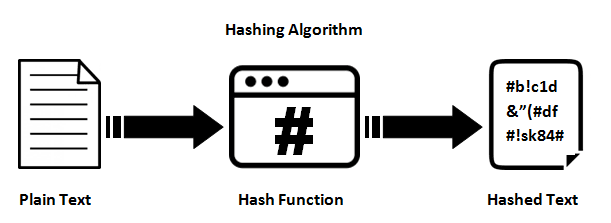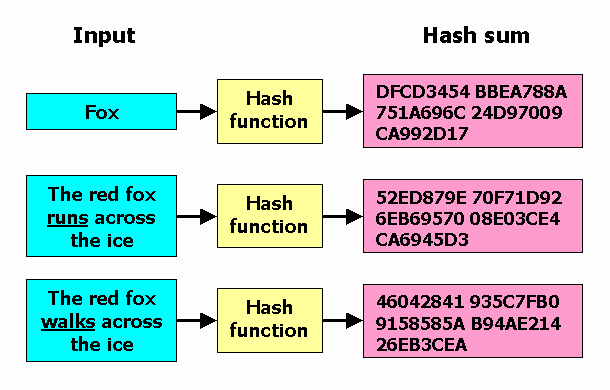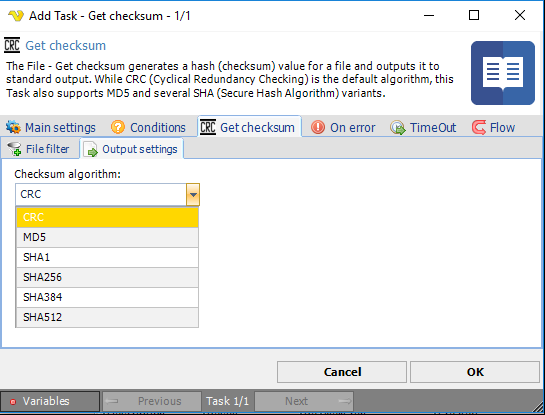

Now that you understand the working of hash functions, look at the key topic in hand - SHA 256 algorithm. When a user downloads it, it can recalculate the hash and compare it to establish data integrity.
How to check file hash algorith password#
Password Hashes: In most website servers, it converts user passwords into a hash value before being stored on the server.

There are two primary applications of hashing: Hash functions also provide the same output value if the input remains unchanged, irrespective of the number of iterations. They are designed to be irreversible, which means your digest should not provide you with the original plaintext by any means necessary. This function is called the hash function, and the output is called the hash value/digest.Īs seen from the above image, the hash function is responsible for converting the plaintext to its respective hash digest. It takes a piece of information and passes it through a function that performs mathematical operations on the plaintext. Hashing is the process of scrambling raw information to the extent that it cannot reproduce it back to its original form. To understand the working of the SHA 256 algorithm, you need first to understand hashing and its functional characteristics. While there are other variants, SHA 256 has been at the forefront of real-world applications. The secure hash algorithm with a digest size of 256 bits, or the SHA 256 algorithm, is one of the most widely used hash algorithms.
How to check file hash algorith how to#
How to Crack Passwords and Strengthen Your Credentials Against Brute-Force Lesson - 32Īmong the many advancements seen in network security, encryption and hashing have been the core principles of additional security modules. Your Guide to What Is 5G and How It Works Lesson - 31 What Are Keyloggers and Its Effect on Our Devices? Lesson - 29īest Guide to Understand the Importance of What Is Subnetting Lesson - 30 The Best Guide to Understand What Is TCP/IP Model? Lesson - 28 The Value of Python in Ethical Hacking and a Password Cracking Tutorial Lesson - 27 Your Best Guide to a Successful Cyber Security Career Path Lesson - 26 What Is Google Dorking? Your Way to Becoming the Best Google Hacker Lesson - 25 What Is NMap? A Comprehensive Tutorial for Network Mapping Lesson - 24 The Best and Easiest Way to Understand What Is a VPN Lesson - 23 Kali Linux Lesson - 21Īll You Need to Know About Parrot Security OS Lesson - 22 Your Guide to Choose the Best Operating System Between Parrot OS vs. The Top 5 Cybersecurity Skills You Must Have Lesson - 20 What Is a Brute Force Attack and How to Protect Our Data Against It? Lesson - 19 The Best Guide to The Top Cybersecurity Interview Questions Lesson - 18 Top 6 Cyber Security Jobs in 2021 Lesson - 17

The Top Computer Hacks of All Time Lesson - 16 The Best Ethical Hacking + Cybersecurity Books Lesson - 14ġ0 Types of Cyber Attacks You Should Be Aware in 2021 Lesson - 15 The Most Informative Guide on What Is an IP Address? Lesson - 13 What Is a Ransomware Attack and How Can You Prevent It? Lesson - 11Ī Look at the Top 5 Programming Languages for Hacking Lesson - 12 The Complete Know-How on the MD5 Algorithm Lesson - 9Ī Definitive Guide to Learn the SHA 256 Algorithm Lesson - 10 What Is a Firewall and Why Is It Vital? Lesson - 8

How to Become an Ethical Hacker? Lesson - 7 What Is SQL Injection: How to Prevent SQL Injection Lesson - 6 What is Penetration Testing?: A Step-by-Step Guide Lesson - 5 What is Ethical Hacking and Type of Ethical Hackers Lesson - 4 How to Become a Cyber Security Engineer? Lesson - 3 What is Cyber Security and Why It is Important? Lesson - 1


 0 kommentar(er)
0 kommentar(er)
